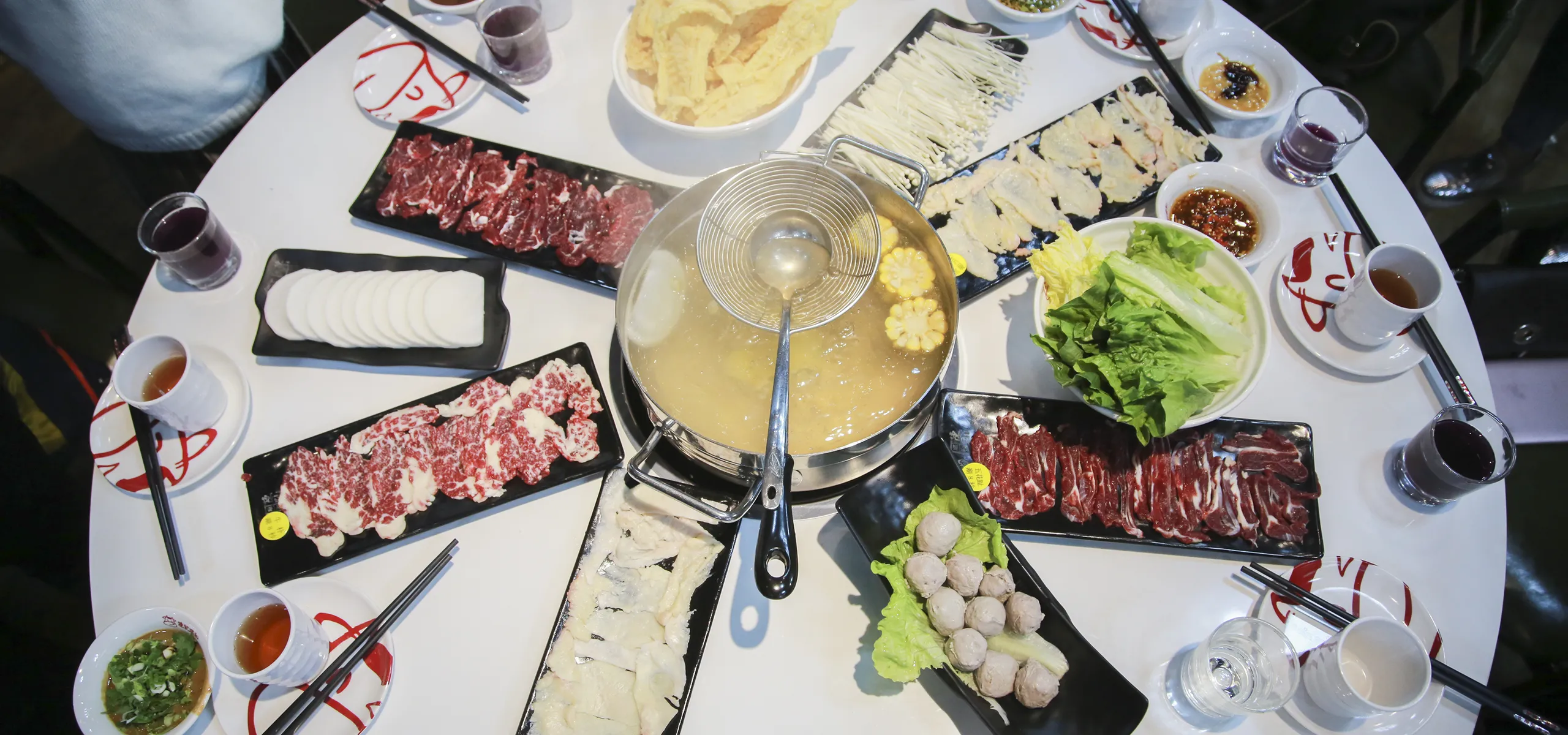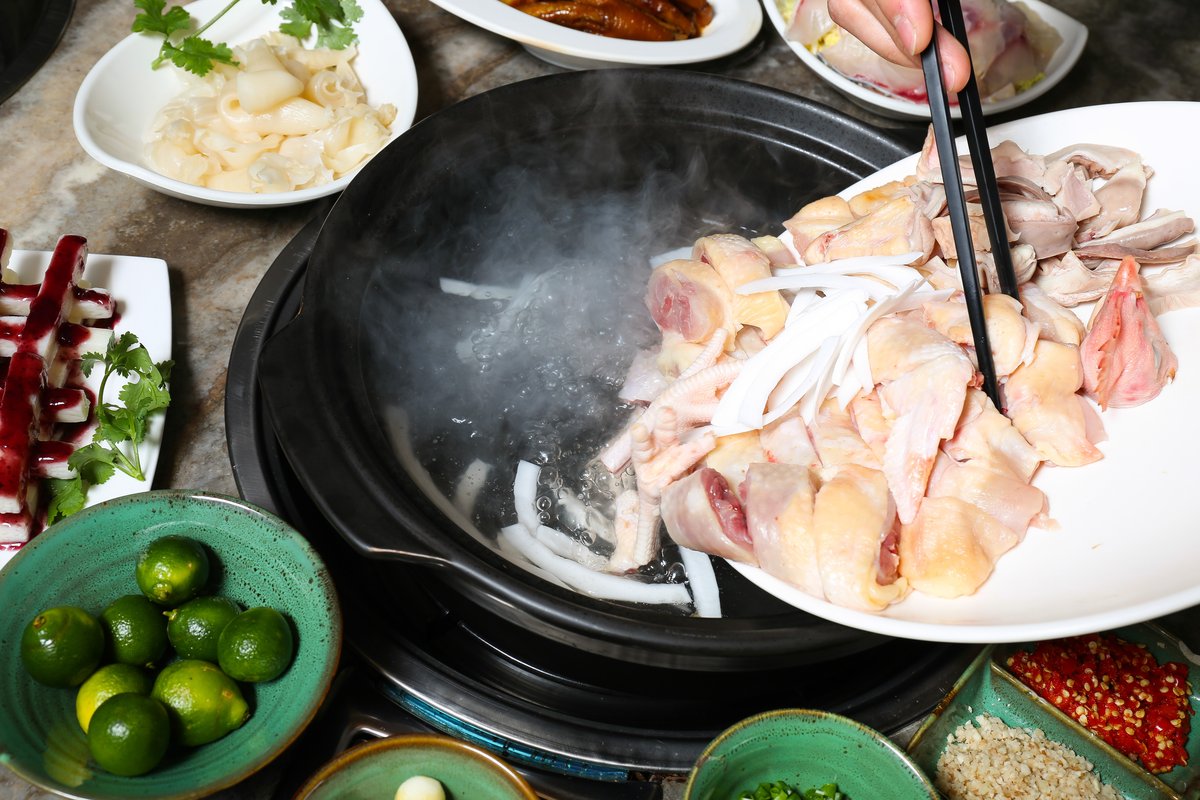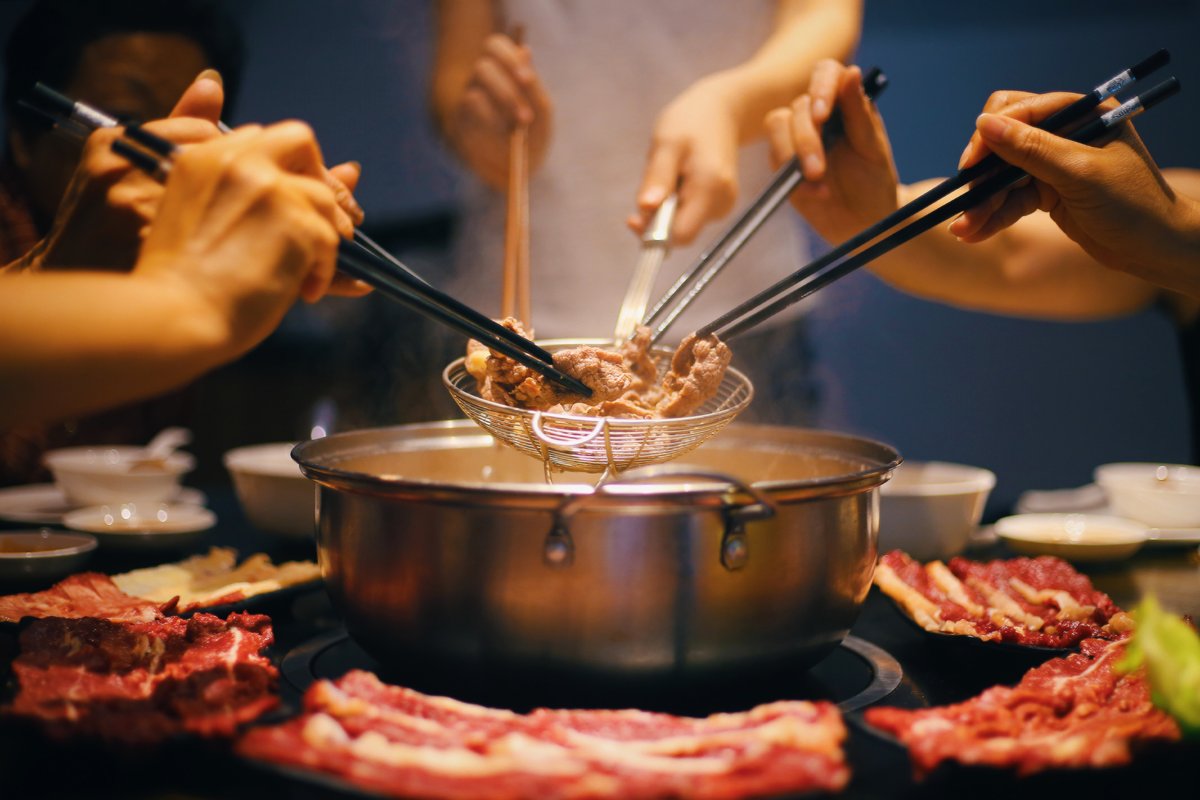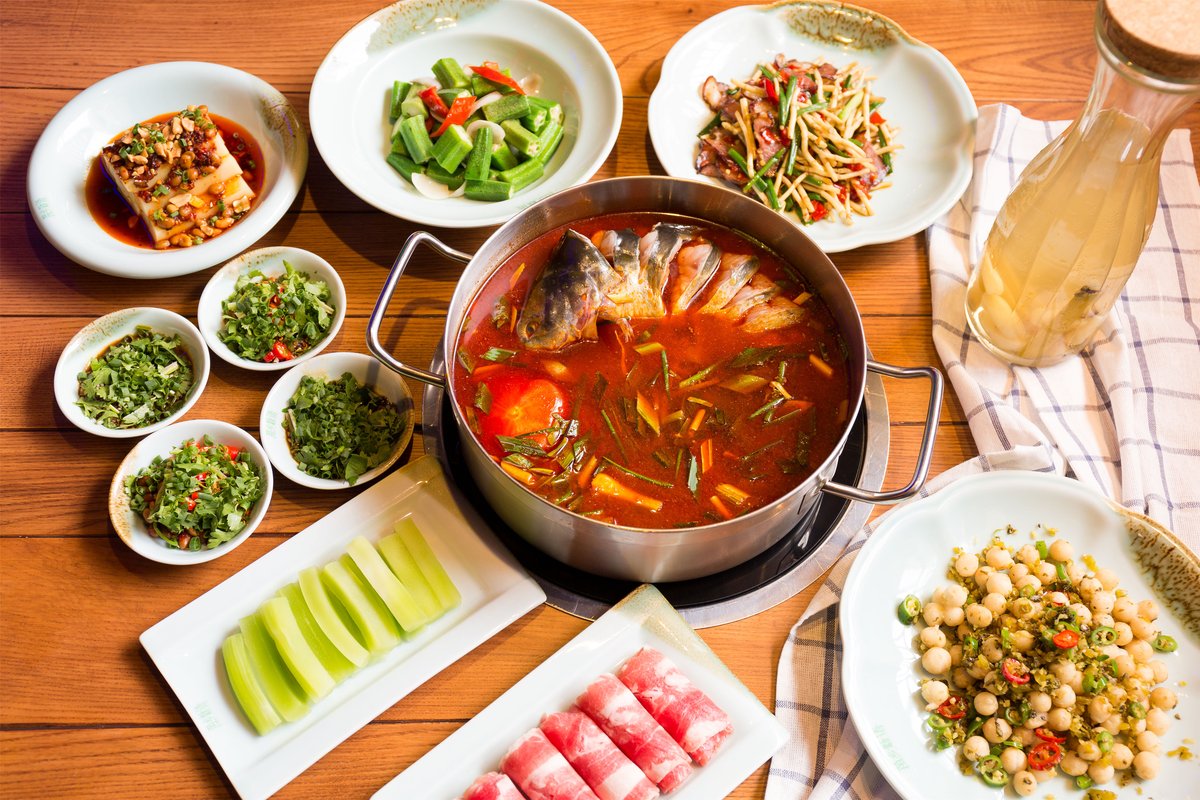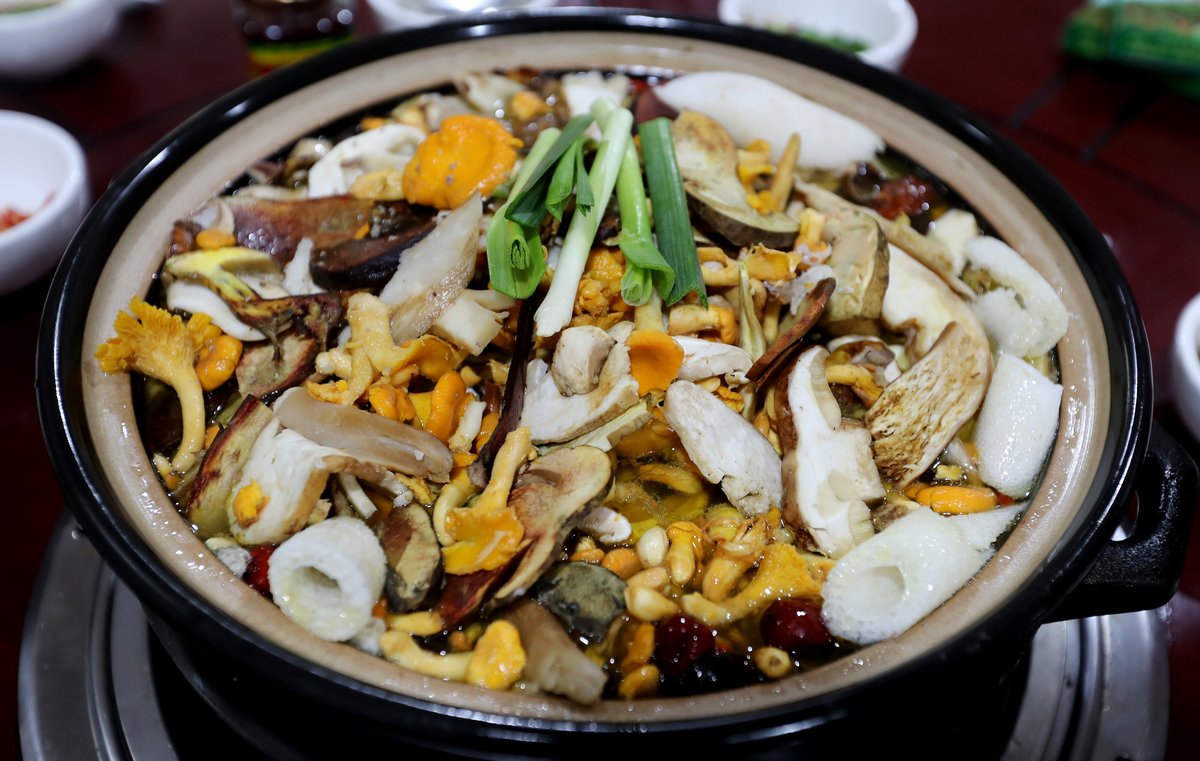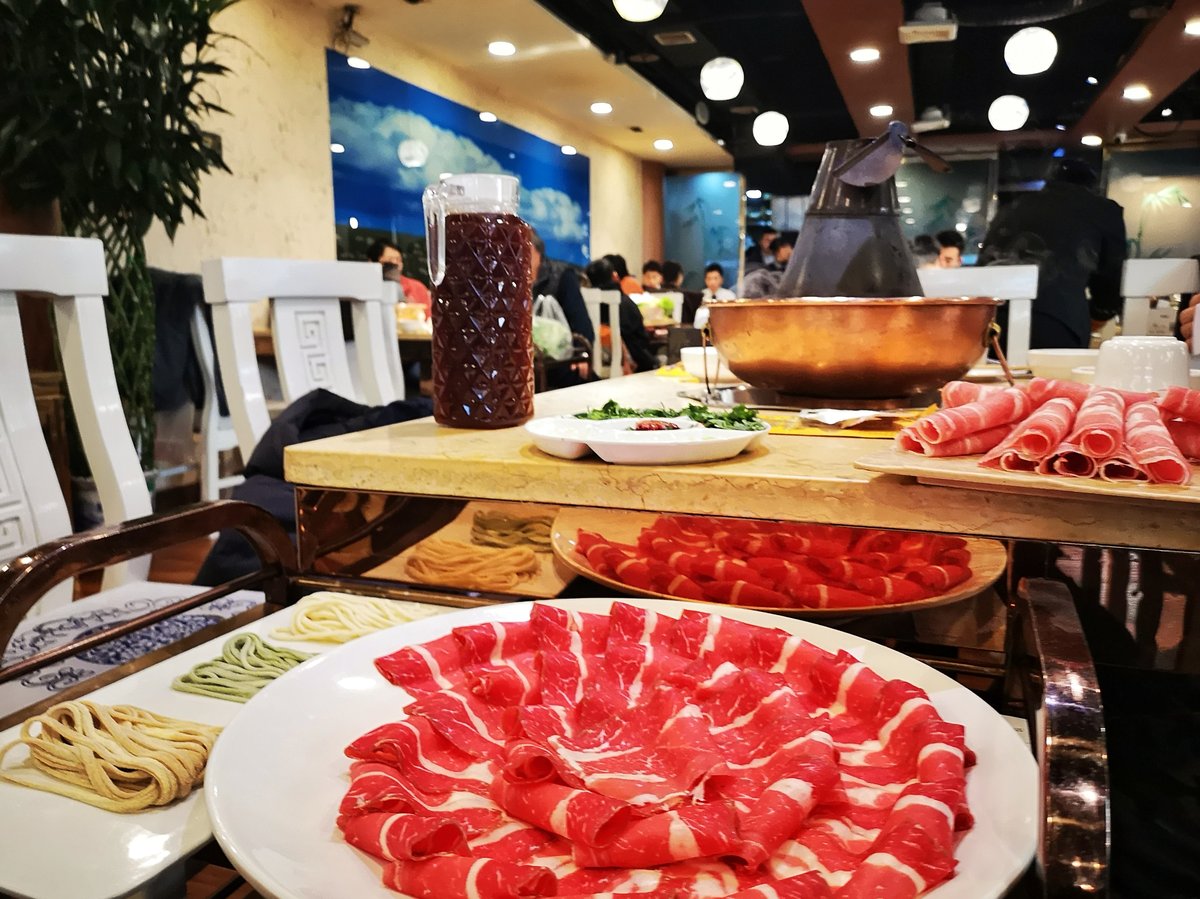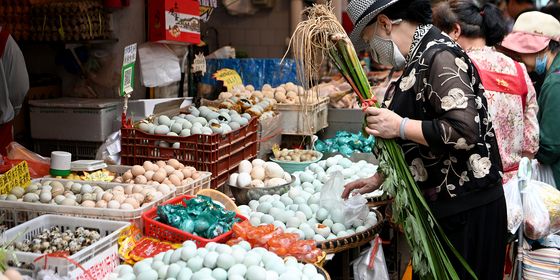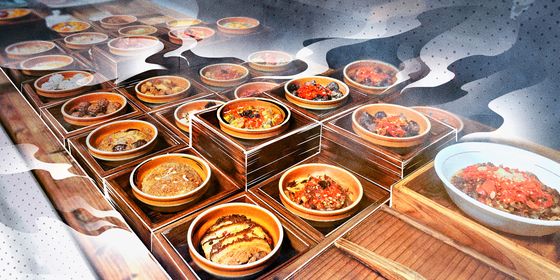Discover all the hot pot varieties outside the Sichuan-Chongqing region
Mention Chinese hot pot, and most people think of the deep red soups and spicy flavors of Chongqing and Sichuan. But hot pot is far more than just a fiery dish of China’s southwest. From coconut-based soups in the south to feasts of lamb inspired by Genghis Khan up north, here are some of China’s best regional hot pot dishes.
Tropical flavors with coconut
On the tropical island of Hainan, coconut chicken hot pot (海南椰子鸡火锅) is everywhere. Using fresh coconut water as the soup, diners then cook the island’s famous lean chicken in the broth along with their vegetables of choice. The coconut water and free range chicken make a refreshing and tender match. The signature condiment for this dish is a mix of soy sauce, chilies, ginger, and lime.
In fact, the dish first emerged in the 1990s in Shenzhen, when a Hainanese migrant there opened up a restaurant selling his new invention. In rapidly urbanizing and growing Shenzhen, this simple meal with nutritious chicken and warm soup serves as a comfort food, and coconut chicken hot pot restaurants are a frequent sight in the city even today.
Guangdong’s seafood and beef varieties
Across the Hainan Strait lies the province of Guangdong, famous for its food and home to Chaoshan beef hot pot (潮汕牛肉火锅). Chaoshan refers to an area in southeastern Guangdong that traditionally shared cultural and linguistic characteristics with the island province. The dish allegedly emerged from a street stall in Shantou during the 1960s and is still popular today, relying almost entirely on the quality and freshness of the beef for its tastiness.
Guangdong is also famous for its seafood, and Shunde in particular is regarded as having some of the tastiest and freshest catch. In Shunde, seafood congee hot pot (顺德海鲜粥底火锅) features shellfish, shrimp, crabs, fish, beef, and vegetables and is a popular breakfast dish. In 2014, Shunde was named a Creative City of Gastronomy by UNESCO.
Sour flavors in Guizhou
In Guizhou province, hot pot goes sour. But in this province, sour can mean over 128 different things according to local records. That’s the number of different sour sauces made from almost everything in the province. Shrimp sour sauce, for example, is made with fermented river shrimp, tomatoes, red peppers, garlic, ginger, and glutinous rice wine. In the past, it was challenging to transport salt through the mountains to reach Guizhou, so locals made their own sour sauces to make up for the lack of salt.
Apparently developed over 1,000 years ago by ethnic Miao people in the area, sour fish hot pot (贵州酸汤鱼火锅) has two classic soup bases: white and red. The white soup is made with sweet rice, while the red variety is made from wild tomatoes, mountain peppers, and baijiu. After eating the juicy fish, locals never waste a drop of the sour soup.
Yunnan’s mushroom pots
Bordering Guizhou is Yunnan province, where hot pot is all about fungi. While 2,500 varieties of wild mushrooms are known to the world, Yunnan’s subtropical rainforests alone are home to some 900 varieties. During the rainy season, from June to October, mushrooms poke their heads up from the ground, marking the prime period for wild mushroom hot pot (云南野生菌火锅). From the green head mushroom, to bamboo fungus wearing a “white lace dress,” and yellow chanterelles nicknamed “chicken oil mushrooms,” all kinds of exotic mushrooms find their home in a cozy chicken soup.
Eating Yunnan’s shrooms can be a dangerous business for the uninitiated, though, with several poisonous (and psychedelic) varieties growing wild there. Some mushrooms must be thoroughly cooked first before they are safe to eat, so many restaurants refuse to provide diners with cutlery for the first 20 minutes of their hot pot dinner, to avoid customers eating the fungi too soon. The delicious taste is worth the wait though.
Rich northern stews
The legend of China’s northern lamb hot pot (北方涮羊肉火锅) has it that Genghis Khan invented the dish to make his armies more efficient. The Mongolian armies would normally eat barbecued lamb, but cooking lamb legs and other large cuts of meat often took hours. Genghis, therefore, ordered the lamb cut into small, thin pieces and cooked in boiling water, so that it could be eaten straight away. Some soldiers apparently even used their helmets as the pot. Today, the dish is a favorite in Beijing and other northern areas, with the thin lamb slices cooking almost instantly and paired with a rich sesame sauce.
In the Northeast (Dongbei), Liaoning province is famous for its sour cabbage hot pots. Rich in vitamins, cabbages moisturize skin from the cold, dry Dongbei winters. Once pickled into sauerkraut, this easy-to-store dish helps see northerners through the harsh winter months. It remains a tradition in many Dongbei households to make one’s own sour cabbage for winter each year. Cabbage is shredded and placed in a large vat with a layer of coarse salt between each layer of leaves. The vat is filled with water and sealed with a large stone on top while it ferments for a month or so.
Sauerkraut soup forms the base of Dongbei sour cabbage hot pot (东北酸菜火锅). Diners add pork, blood sausages, oysters, potatoes, vermicelli noodles, and frozen tofu to the broth. When the temperature falls below zero, sauerkraut hot pot is a heart-warming companion for every Dongbei local.





